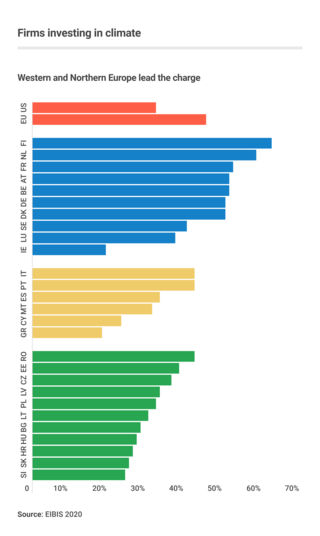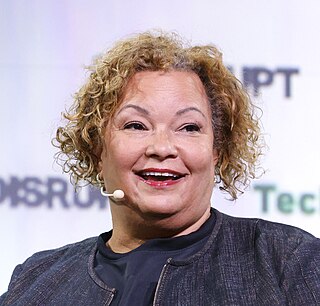The Energy Task Force, officially the National Energy Policy Development Group (NEPDG), was a task force created by U.S. President George W. Bush in 2001 during his second week in office. Vice President Dick Cheney was named chairman. This group's stated objective was to “develop a national energy policy designed to help the private sector, and, as necessary and appropriate, State and local governments, promote dependable, affordable, and environmentally sound production and distribution of energy for the future." The final report was released on May 16, 2001.

Business action on climate change is a topic which since 2000 includes a range of activities relating to climate change, and to influencing political decisions on climate change-related regulation, such as the Kyoto Protocol. Major multinationals have played and to some extent continue to play a significant role in the politics of climate change, especially in the United States, through lobbying of government and funding of climate change deniers. Business also plays a key role in the mitigation of climate change, through decisions to invest in researching and implementing new energy technologies and energy efficiency measures.

The energy policy of the United States is determined by federal, state, and local entities. It addresses issues of energy production, distribution, consumption, and modes of use, such as building codes, mileage standards, and commuting policies. Energy policy may be addressed via legislation, regulation, court decisions, public participation, and other techniques.

Lisa Perez Jackson is an American chemical engineer who served as the administrator of the United States Environmental Protection Agency (EPA) from 2009 to 2013. She was the first African American to hold that position.
The United States produces mainly biodiesel and ethanol fuel, which uses corn as the main feedstock. The US is the world's largest producer of ethanol, having produced nearly 16 billion gallons in 2017 alone. The United States, together with Brazil accounted for 85 percent of all ethanol production, with total world production of 27.05 billion gallons. Biodiesel is commercially available in most oilseed-producing states. As of 2005, it was somewhat more expensive than fossil diesel, though it is still commonly produced in relatively small quantities, in comparison to petroleum products and ethanol fuel.

The United States produced 5.2 billion metric tons of carbon dioxide equivalent greenhouse gas (GHG) emissions in 2020, the second largest in the world after greenhouse gas emissions by China and among the countries with the highest greenhouse gas emissions per person. In 2019 China is estimated to have emitted 27% of world GHG, followed by the United States with 11%, then India with 6.6%. In total the United States has emitted a quarter of world GHG, more than any other country. Annual emissions are over 15 tons per person and, amongst the top eight emitters, is the highest country by greenhouse gas emissions per person.

Fossil fuel phase-out is the gradual reduction of the use and production of fossil fuels to zero, to reduce air pollution, limit climate change, and strengthen energy independence. It is part of the ongoing renewable energy transition, but is being hindered by fossil fuel subsidies.

The Clean Cities Coalition Network is a coordinated group of nearly 100 coalitions in the United States working in communities across the country to advance affordable, domestic transportation fuels, energy-efficient mobility systems, and other fuel-saving technologies and practices.

Climate change in Massachusetts affects both urban and rural environments, including forestry, fisheries, agriculture, and coastal development. The Northeast is projected to warm faster than global average temperatures; by 2035, the Northeast is "projected to be more than 3.6°F (2°C) warmer on average than during the preindustrial era."
The White House Office of Energy and Climate Change Policy was a government entity in the United States created in 2008 by President Barack Obama by Executive Order. It existed for over two years and was combined with another presidential office in April 2011. The office was created to coordinate administration policy on energy and global warming. Under the Biden administration, it has been succeeded by both the Office of Domestic Climate Policy and the Office on Clean Energy Innovation and Implementation.

The American Clean Energy and Security Act of 2009 (ACES) was an energy bill in the 111th United States Congress that would have established a variant of an emissions trading plan similar to the European Union Emission Trading Scheme. The bill was approved by the House of Representatives on June 26, 2009, by a vote of 219–212. With no prospect of overcoming a threatened Republican filibuster, the bill was never brought to the floor of the Senate for discussion or a vote. The House passage of the bill was the "first time either house of Congress had approved a bill meant to curb the heat-trapping gases scientists have linked to climate change."

A low-carbon fuel standard (LCFS) is an emissions trading rule designed to reduce the average carbon intensity of transportation fuels in a given jurisdiction, as compared to conventional petroleum fuels, such as gasoline and diesel. The most common methods for reducing transportation carbon emissions are supplying electricity to electric vehicles, supplying hydrogen fuel to fuel cell vehicles and blending biofuels, such as ethanol, biodiesel, renewable diesel, and renewable natural gas into fossil fuels. The main purpose of a low-carbon fuel standard is to decrease carbon dioxide emissions associated with vehicles powered by various types of internal combustion engines while also considering the entire life cycle, in order to reduce the carbon footprint of transportation.
The climate change policy of the United States has major impacts on global climate change and global climate change mitigation. This is because the United States is the second largest emitter of greenhouse gasses in the world after China, and is among the countries with the highest greenhouse gas emissions per person in the world. Cumulatively, the United States has emitted over a trillion metric tons of greenhouse gases, more than any country in the world.

The energy policy of the Obama administration was defined by an "all-of-the-above" approach which offered federal support for renewable energy deployment, increased domestic oil and gas extraction, and export of crude oil and natural gas. His presidency's first term was shaped by the failure of his signature climate legislation, the American Clean Energy and Security Act, to pass, and then climate and energy disasters including the Deepwater Horizon oil spill in 2010 and then Hurricane Sandy, which took place during the 2012 election. In his second term, Obama lifted the ban on crude oil exports and approved liquified natural gas exports; his planned regulatory approach to reducing greenhouse pollution in the electricity sector, the Clean Power Plan, was blocked by the U.S. Supreme Court.
The climate change policy of the United States under the presidency of George W. Bush can be categorized into two major components: a technological strategy to reduce carbon emissions and one with an emission intensity target to reduce carbon emissions by 18 percent. Bush backed out on the promises on the campaign trail to regulate carbon dioxide emissions from power plants, within two months of taking office he walked away from his commitment. One of the most notable policies during his administration is his opposition to the Kyoto Protocol.
Executive Order 13514 was an Executive Order, entitled Federal Leadership in Environmental, Energy, and Economic Performance, which U.S. President Barack Obama issued on October 5, 2009. EO 13514 was replaced by Executive Order 13693, titled Planning for Federal Sustainability in the Next Decade, issued by Obama on March 19, 2015. The Office of the Federal Environmental Executive, whose name was changed to the Office of Federal Sustainability by Executive Order 13693, is housed at the Council on Environmental Quality within the Executive Office of the President of the United States. Its role is to oversee policy, guidance, and implementation of the sustainability Executive Order.

The Clean Power Plan was an Obama administration policy aimed at combating climate change that was first proposed by the Environmental Protection Agency (EPA) in June 2014. The final version of the plan was unveiled by President Barack Obama on August 3, 2015. Each state was assigned a target for reducing carbon emissions within its borders, which could be accomplished how the states saw fit, but with the possibility of the EPA stepping in if a state refused to submit a plan. If every state met its target, the plan was projected to reduce carbon emissions from electricity generation by 32 percent relative to 2005 levels by 2030, and would have reduced other harmful air pollution as well.
Fossil fuel regulations are part of the energy policy in the United States and have gained major significance with the nation's strong dependence on fossil fuel-based energy. Regulatory processes are established at the federal and state level due to the immense economic, socio-political and environmental impact of fossil fuel extraction and production. Over 80% of the United States' energy comes from fossil fuels such as coal, natural gas, and oil. The Bush administration was marked by the Energy Policy Act of 2005, which provided a monetary incentive for renewable energy adoption and addressed the issue of climate change. The Obama administration was made up of advocates for renewable energy and natural gas, while Donald Trump built his campaign on promises to revive the coal industry.

As the most populous state in the United States, California's climate policies influence both global climate change and federal climate policy. In line with the views of climate scientists, the state of California has progressively passed emission-reduction legislation.
Green recovery packages are proposed environmental, regulatory, and fiscal reforms to rebuild prosperity in the wake of an economic crisis, such as the COVID-19 recession or the 2007–2008 financial crisis. They pertain to fiscal measures that intend to recover economic growth while also positively benefitting the environment, including measures for renewable energy, efficient energy use, nature-based solutions, sustainable transport, green innovation and green jobs, amongst others.












